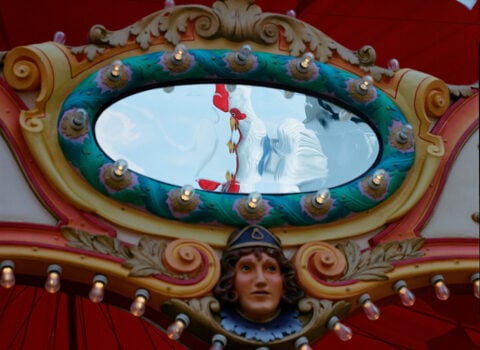Nursing researchers advanced a theory of “post-traumatic slave syndrome” in the African-American population. Maternal fear of immigration raids shrinks Latino babies in Iowa. Media coverage of unauthorized Mexican immigration drives white Americans to the G.O.P. American labs were worried about their Iranian grad students. Hundreds of thousands of red Skittles escaped onto a Wisconsin highway before they could be fed to cattle. Honeybee guards accept drifting migrant bees but repel hostile raider bees. Predators force guppies to bond. Reef fish will conquer their fear of sharks if the rewards are sufficiently enticing. Reports emerged that a group of chimpanzees attacked a deposed tyrannical alpha male, beat him with rocks and sticks, tore his anus and throat, stomped on him, bit his genitals, and ate him. A moth that spins in circles and has a pompadour of whitish-yellow scales was named Neopalpa donaldtrumpi. A species of crypt wasp that burrows inside gall wasps and takes over their minds — forcing them to dig tiny hatchery exit holes in which they then become trapped while the crypt wasp consumes them from the inside before escaping — was named for the Egyptian god of disorder, violence, and foreigners.
It now seems more likely that the universe is a hologram. The authors of “The Selfie Paradox: Nobody Seems to Like Them yet Everyone Has Reasons to Take Them” noted that irony and half-hearted commitment allow selfie-takers to achieve self-promotional goals without feeling narcissistic, even as they worry that they are helping to create an “illusionary world.” Alerting people to the ubiquity and unreality of certain pervasive images does not lessen their effect. Cognitive scientists were looking into a fake-news vaccine. Liberal news satires make Democrats feel more able to effect change, whereas conservative news satires make Republicans feel powerless. Asking large groups of people what they think the correct answer to a question is and what they think other people think the correct answer is, then averaging those two answers, yields the right answer. Totalitarian regimes use psychiatric science as a justification when their unfair treatment of a group might otherwise offend the public. Buddhists can suppress reactions to terrifying stimuli by chanting the name of Amit obha but not by chanting the name of Santa Claus. Scientists found that the idea of implanting beneficial false memories evokes responses “ranging from abject horror to unqualified enthusiasm.” A review of eighty-eight years of clinical literature concluded that masochism is “a way of avoiding uncontrollable suffering by willingly undertaking other, milder, more controllable suffering.” Depression makes it easier to abandon unattainable goals. Chinese teenagers who believe in free will are happier. Facebook users are motivated primarily by entertainment when they post on the walls of the dead.
Paleontologists investigated whether complex life on Earth may have had a false start during the Lomagundi Event, 1.5 billion years before succeeding. Humans have 170 times the effect on climate that nature does. The freshening of Antarctic bottom waters is accelerating sea-level rise, litter on the floor of the Arctic Ocean has increased twentyfold in the past fifteen years, and the East China Sea is being choked by nitrogen. Rangers in Western Australia observed a 3,000-foot-tall fire tornado. The genomes of the death cap and the destroying angel have been sequenced. Most primates risk going extinct, and a bioethicist argued that humans should engineer their own extinction by creating artificially intelligent beings who will live lives better than ours. Technology will not allow humanity to dematerialize. The Bulletin of the Atomic Scientists’ Science and Security Board moved the Doomsday Clock thirty seconds closer to midnight. The guardian of the thousand-year-old windmills of Nashtifan was expected to die with no successor.





